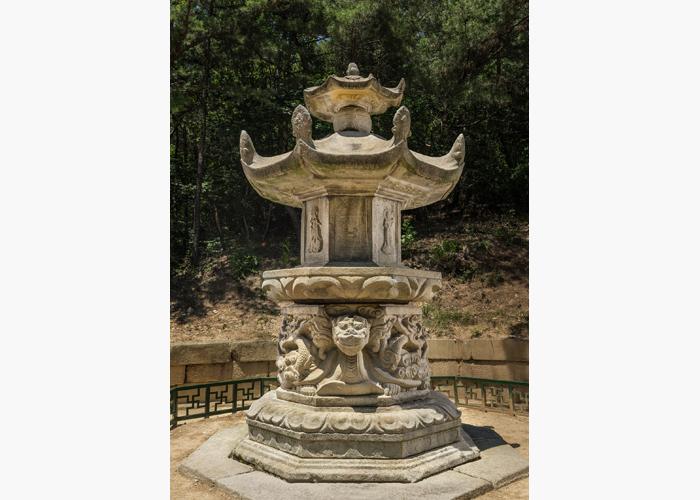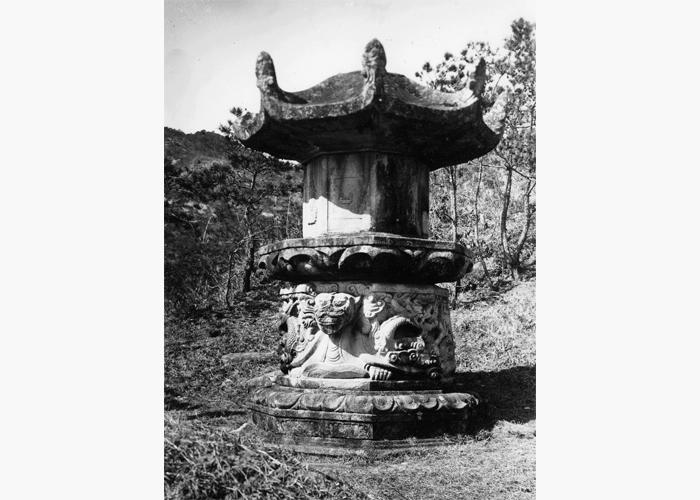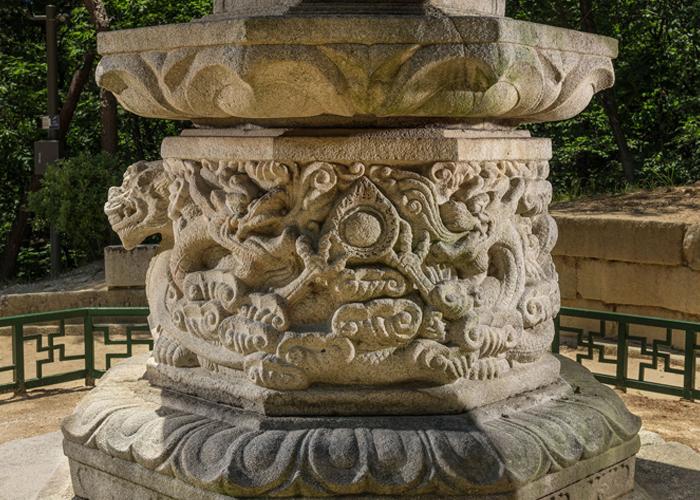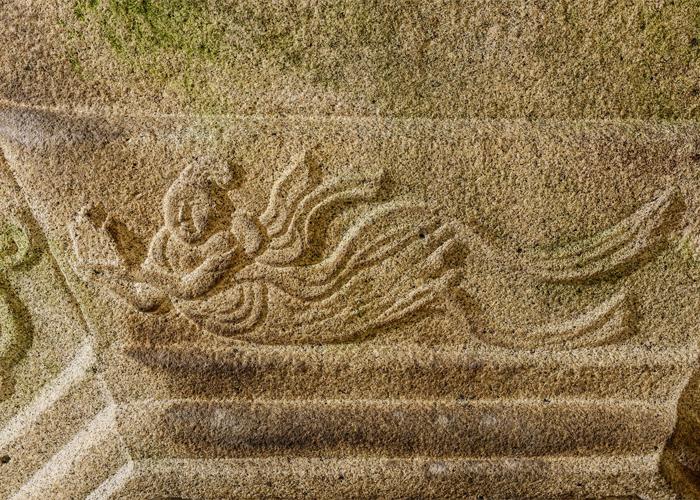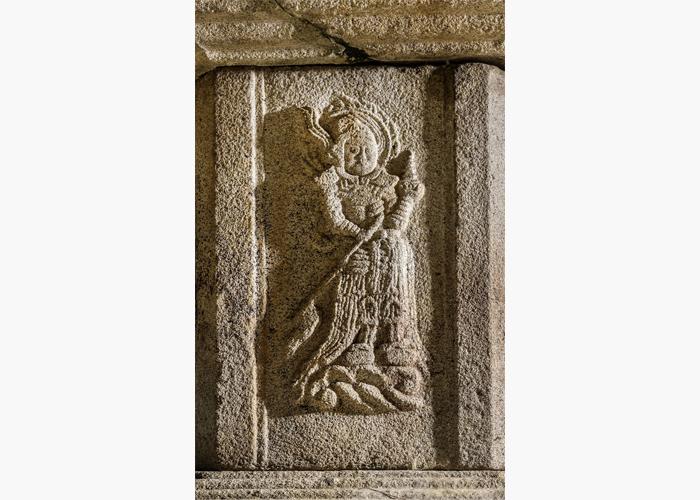National Treasure
- 복사
-
모바일로 QR코드를 스캔하면
이 페이지로 바로 접속 할 수있습니다.
Stupa at Godalsa Temple Site, Yeoju
- Designation code National Treasure No. 4
- Designated date Dec. 20, 1962
- Era Goryeo dynasty
- Scale 1 unit / 8.9 ㎡
- Location 경기 여주시 북내면 상교리 411-1
- 주차장
- 와이파이
- 자전거
출입여부 - 반려동물
출입여부 - 장애인화장실
설치여부 - 유모차·휠체어
접근여부 - 유아시설정보
Introduction
It is a Buddhist tower from the Goryeo era remaining in the Godalsa Temple Site. Founded in the 26th year of King Gyeongdeok’s rule (764) in the age of the United Silla Era, Godalsa Temple once enjoyed its status as a large temple after the years of King Gwangjong of Goryeo. However, it is unknown when this temple shut its gates.
The tower with an octagonal base maintains a fairly good state of its original state except the imperfect status of the top decoration. The base that supports the whole mass of the tower comprises three parts of top, middle, and bottom. The engravings on the middle stone stand out. The middle stone almost takes the shape of a circle rather than an octagon, and the turtle engraved on the surface looks real with three-dimensional expressions. Four dragons are engraved around the stone with the turtle at the center. The remaining space is filled with cloud patterns. The stupa lets off an atmosphere of articulation and daring prowess simultaneously with its stones filled to the brim with patterns that are unexaggerated yet meticulous. With the middle stone at the center, the top and bottom stones add to the tower’s elegance with their lotus flower patterns.
A door pattern and the Four Heavenly Kings are engraved on the tower body stone working as a sarira storage. The sculpture with a lock-shaped pattern on the door looks plain, which shows that it was created for formality reasons. The roofs that cover the stone is quite thick; further down its edges is a large flower sculpture, which lacks decoration effects due to the thin shape that pales in comparison to its size. At the top of the roof stone is another round stone with a baldachin sculpture put on top, which resembles a small version of the roof.
The tower does well to follow the basics of Silla’s artistic styles while displaying the unique characteristics of Goryeo sculptures with each of its parts. Such traits lead to speculations that the tower would have been built around the 10th century. The tower displays clean-cut masonry skills and meticulous styles in its sculptures.

